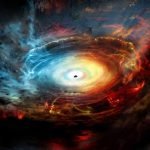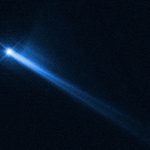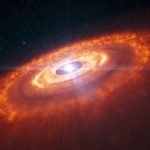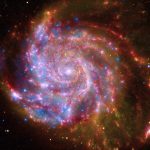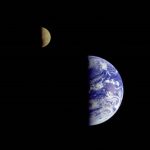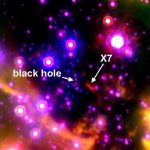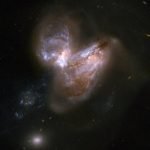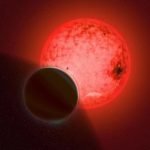Ultramassive black holes: how does the universe produce objects so massive?
Black holes are the most massive objects that we know of in the Universe.
Not stellar mass black holes, not supermassive black holes (SMBHs,) but...
New digital tool can reveal the past, predict Earth’s future
For the first time, scientists have a high-resolution model of how today's geophysical landscapes were created and how millions of tonnes of sediment have...
What did we learn from the asteroid-smashing DART mission?
On Sept. 26, 2022, at precisely 6:14 p.m. ET, a box-shaped spacecraft no bigger than a loveseat smashed directly into an asteroid wider than...
How do super-Earths form? New theory offers explanation
A new theory for how rocky planets form, developed by Caltech planetary scientist Konstantin Batygin and researcher Alessandro Morbidelli of the Observatoire de la...
Astronomers discover metal-rich galaxies in early universe
Scanning the first images of a well-known early galaxy taken by NASA’s James Webb Space Telescope (JWST), Cornell astronomers were intrigued to see a...
Scientists discover the fifth layer in Earth’s core
Data captured from seismic waves caused by earthquakes has shed new light on the deepest parts of Earth's inner core, according to seismologists from...
A mysterious object is being dragged into the supermassive black hole at the Milky...
An object near the supermassive black hole at the center of the Milky Way galaxy has drawn the interest of scientists because it has...
New discovery sheds light on very early supermassive black holes
Astronomers from the University of Texas and the University of Arizona have discovered a rapidly growing black hole in one of the most extreme...
Venus’ squishy outer shell may be resurfacing the planet, shows study
The research uses archival NASA data to show that Venus may be losing heat from geologic activity in regions called coronae, possibly like early...
Scientists discover an unusual planetary system that challenges current theories
Scientists discover an unusual planetary system in which a large gas giant planet orbits a small red dwarf star called TOI-5205.

